Mallard Duck
- February 16, 2024
- 0 comment
The Mallard Duck, scientifically known as Anas platyrhynchos, is a versatile and ubiquitous waterfowl species found across North America, Europe, and Asia. With its striking appearance and distinctive quack, the Mallard is one of the most recognizable ducks in the world. These medium-sized dabbling ducks are known for their vibrant plumage, featuring glossy green heads, white neck rings, and chestnut-brown chests in males, while females exhibit more subdued brown plumage with speckled markings.

Mallards are highly adaptable birds, thriving in a variety of wetland habitats including lakes, ponds, rivers, and marshes. They are often seen foraging for aquatic plants, seeds, insects, and small fish by “dabbling” or tipping forward in the water to reach their food. Mallard Ducks are also migratory birds, with populations in colder regions migrating southward during winter to escape freezing temperatures. In addition to their ecological importance, Mallards hold cultural significance in many societies, featuring prominently in folklore, art, and literature throughout history.
However, despite their widespread distribution and adaptability, Mallard populations face threats from habitat loss, pollution, hunting, and predation. Conservation efforts are crucial for protecting these iconic waterfowl and preserving their natural habitats for future generations to enjoy.
| Specification | Description |
|---|---|
| Scientific Name | Anas platyrhynchos |
| Size | Medium-sized, with males typically larger than females |
| Weight | Males: 2.5 – 3.5 pounds; Females: 2.0 – 2.5 pounds |
| Length | 20 – 26 inches (50 – 65 centimeters) |
| Wingspan | 32 – 39 inches (81 – 99 centimeters) |
| Plumage | Males: Vibrant plumage with glossy green heads, white neck rings, and chestnut-brown chests. Females: Subdued brown plumage with speckled markings. |
| Bill | Broad and flat, adapted for filtering food from mud and shallow water |
| Feet | Webbed for efficient paddling through water |
| Habitat | Wetland habitats including lakes, ponds, rivers, marshes, and estuaries |
| Diet | Omnivorous, feeding on aquatic plants, seeds, insects, and small fish |
| Behavior | Sociable birds often found in small flocks, exhibiting dabbling feeding behavior in water |
| Mating and Breeding | Males perform elaborate courtship displays during the breeding season to attract females |
| Migration | Migratory birds, with populations in colder regions migrating southward during winter |
| Conservation Status | Listed as a species of least concern by the IUCN |
| Threats | Habitat loss, pollution, hunting, and predation |
| Conservation Efforts | Focus on habitat preservation, wetland restoration, and sustainable hunting practices |
Mallard Duck: The Allure of Nature’s Painted Waterfowl

Mallard ducks, scientifically known as Anas platyrhynchos, are among the most recognizable and widely distributed waterfowl species in the world. With their vibrant plumage and distinctive quacks echoing across wetlands, these ducks capture the imagination of birdwatchers, nature enthusiasts, and artists alike. Let’s delve into the fascinating world of Mallard ducks to uncover their secrets, habits, and significance.
Mallard ducks are medium-sized dabbling ducks belonging to the Anatidae family. They are native to North America, Europe, and Asia, but due to their adaptability, they have been introduced to various other regions worldwide. Their iconic appearance, featuring glossy green heads, white neck rings, and chestnut-brown chests, makes them easily identifiable among waterfowl species.
Physical Features of Mallard Ducks
These ducks possess a sleek and streamlined body designed for swift swimming and graceful flight. Their webbed feet facilitate efficient paddling through water, while their broad, flat bills are adapted for filtering food from mud and shallow water. Male Mallards, called drakes, exhibit more vibrant plumage than females, with colorful iridescent feathers and a distinctive curled tail feather.

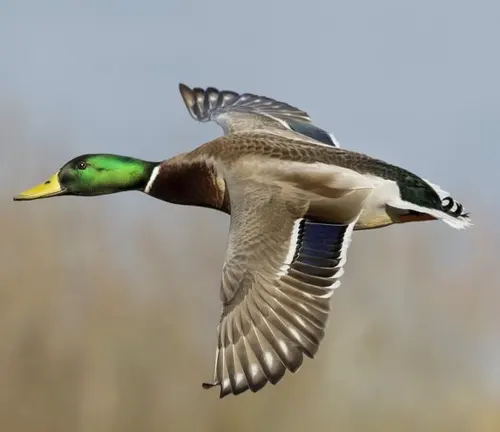
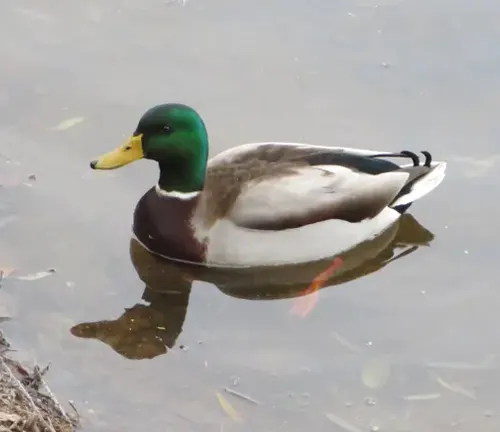
- Plumage: Mallard ducks exhibit sexually dimorphic plumage, with males (drakes) displaying more vibrant and colorful feathers compared to females (hens). Male Mallards have glossy green heads, white neck rings, and chestnut-brown chests, while females have mottled brown plumage with speckled markings for camouflage.
- Size: Mallard ducks are medium-sized waterfowl, with males typically larger than females. On average, Mallards measure between 20 to 26 inches (50 to 65 centimeters) in length.
- Bill: Mallard ducks have a broad and flat bill, which is well-adapted for their omnivorous diet. The bill is used for filtering food from mud and shallow water, as well as for preening feathers.
- Feet: Mallard ducks have webbed feet, which are ideal for paddling through water and navigating wetland habitats. The webbing between their toes helps propel them efficiently while swimming.
- Wingspan: Mallard ducks have a wingspan ranging from 32 to 39 inches (81 to 99 centimeters), enabling them to take flight swiftly and gracefully.
- Body Shape: Mallard ducks have a streamlined body shape, which aids in swimming and flying. Their bodies are designed for agility and maneuverability in aquatic environments.
- Tail: Male Mallards have a distinctive curled tail feather, known as the “drake feather,” which is a key feature of their courtship displays during the breeding season.
- Coloration: In addition to their vibrant plumage, Mallard ducks have striking iridescent feathers on their wings, which shimmer in the sunlight, adding to their visual appeal.
Habitat and Distribution
Mallard ducks inhabit a wide range of wetland habitats, including lakes, ponds, rivers, marshes, and estuaries. They are highly adaptable and can thrive in both natural and urban environments. Mallards are migratory birds, with populations in colder regions migrating southward during winter to escape freezing temperatures.
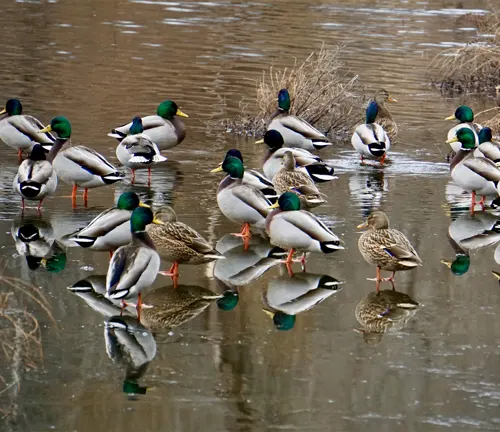
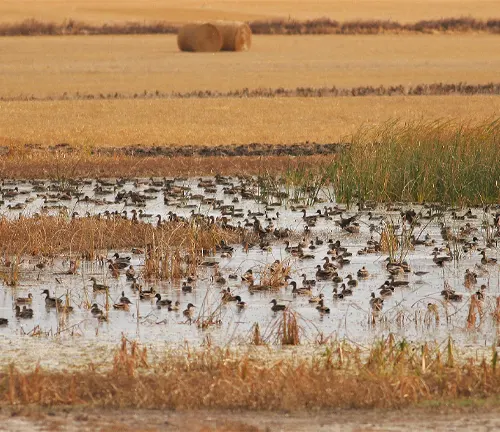

- Wetland Habitats: Mallard ducks are commonly found in wetland habitats such as lakes, ponds, rivers, marshes, and estuaries. These habitats provide ample food sources, nesting sites, and shelter for Mallards throughout their life cycle.
- Global Distribution: Mallard ducks have a broad global distribution, spanning North America, Europe, and Asia. They are native to these continents but have been introduced to other regions worldwide due to their adaptability and popularity among hunters and waterfowl enthusiasts.
- Migration: Mallard ducks are migratory birds, with populations in colder regions migrating southward during winter to escape freezing temperatures. They travel along established migration routes, often congregating in large numbers at stopover sites along the way.
- Breeding Grounds: Mallard ducks typically breed in northern regions during the summer months, where they establish nesting territories in wetland habitats with abundant vegetation for cover. Females build nests on the ground, concealed among reeds or grasses, and lay eggs.
- Urban Environments: Mallard ducks are also well-adapted to urban environments, where they can be found inhabiting parks, ponds, and other man-made water bodies. They have learned to coexist with humans, often taking advantage of food sources provided by people.
- Wintering Areas: During the winter months, Mallard ducks can be found in a wide range of habitats, including coastal areas, inland water bodies, and agricultural fields where they forage for food.
- Adaptability: Mallard ducks are highly adaptable birds, capable of thriving in diverse habitats
ranging from remote wilderness areas to urban parks. Their ability to exploit a variety of food sources and nesting sites contributes to their success as a species.
Behavior and Lifestyle
These sociable ducks are often found in small flocks, foraging together for aquatic plants, seeds, insects, and small fish. Mallards are known for their dabbling feeding behavior, where they tip forward in the water, submerging their heads to reach food below the surface. During the breeding season, males perform elaborate courtship displays, including head bobbing, tail wagging, and vocalizations, to attract females.
Social Behavior
Mallard ducks are social birds that often congregate in small flocks, particularly during the non-breeding season. Within these flocks, individuals engage in various social interactions, including feeding together, preening each other’s feathers, and communicating through vocalizations and body language. During the breeding season, male Mallards exhibit territorial behavior and engage in elaborate courtship displays to attract females.
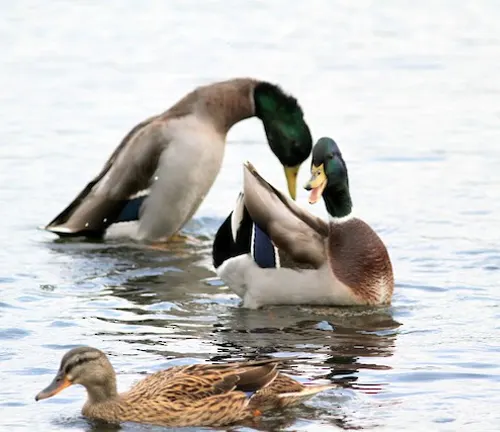
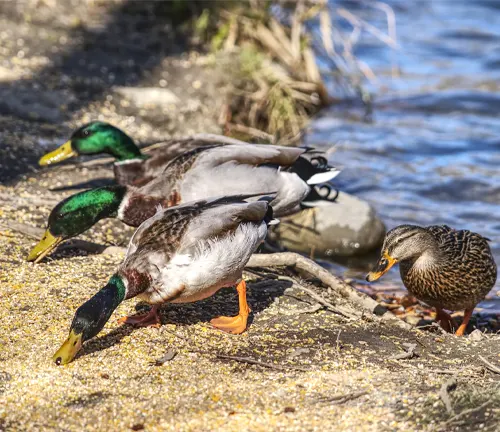
Feeding Habits
Mallard ducks are omnivorous and have a diverse diet that includes aquatic plants, seeds, grains, insects, and small fish. They are dabbling ducks, meaning they feed primarily by tipping forward in the water and submerging their heads to reach food below the surface. Mallards can also graze on land, foraging for seeds and insects in grassy areas near water bodies. Their adaptable feeding habits allow them to exploit a wide range of food sources in their habitat.
Mating and Breeding
Mallard ducks engage in seasonal breeding behavior, with the breeding season typically occurring in spring and summer. During this time, male Mallards compete for access to females and establish mating territories, which they defend vigorously from rival males. Males perform elaborate courtship displays, including head bobbing, tail wagging, and vocalizations, to attract females. Once a pair forms, the female builds a nest on the ground, often concealed among vegetation, where she lays a clutch of eggs. Both parents participate in incubating the eggs and caring for the ducklings after they hatch, although the female typically takes on the primary responsibility of brooding the eggs and tending to the young.
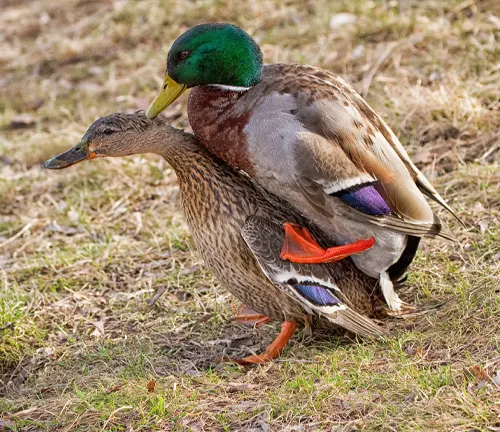
Conservation Status
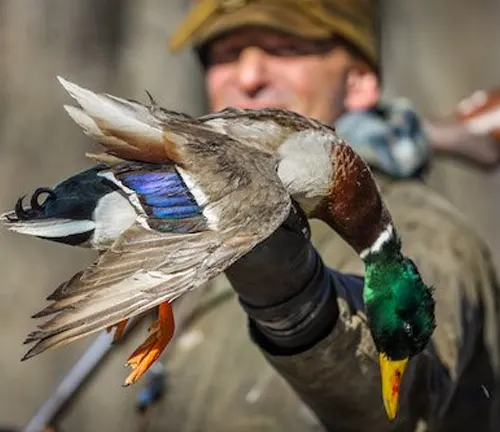
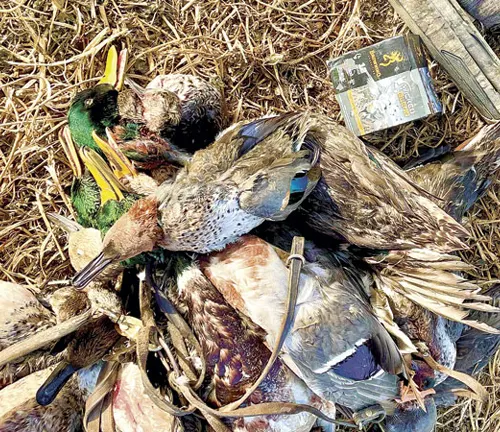
The conservation status of Mallard ducks is generally considered to be of least concern according to the International Union for Conservation of Nature (IUCN). This designation indicates that Mallard duck populations are stable and not currently facing significant threats to their survival on a global scale. However, while Mallards are widespread and adaptable birds, they still face localized threats in certain regions.
Common threats to Mallard duck populations include habitat loss and degradation due to urbanization, agricultural expansion, and wetland drainage. Pollution of water bodies, contamination from pesticides and heavy metals, and disturbances from human activities can also impact Mallards and their habitats. Additionally, hunting and predation by introduced species may pose localized threats to Mallard populations in some areas.
Interesting Facts about Mallard Ducks
- Mallard ducks are excellent flyers, capable of reaching speeds of up to 55 miles per hour during migration.
- They are highly vocal birds, with a diverse repertoire of quacks, whistles, and grunts used for communication.
- Mallards are known to hybridize with other duck species, leading to a wide range of plumage variations among offspring.
Different Species
American Black Duck
(Anas rubripes)
Found primarily in eastern North America, the American Black Duck is similar in appearance to the Mallard but with darker plumage overall.
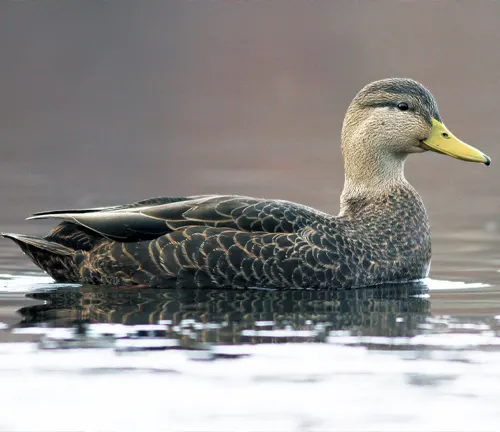
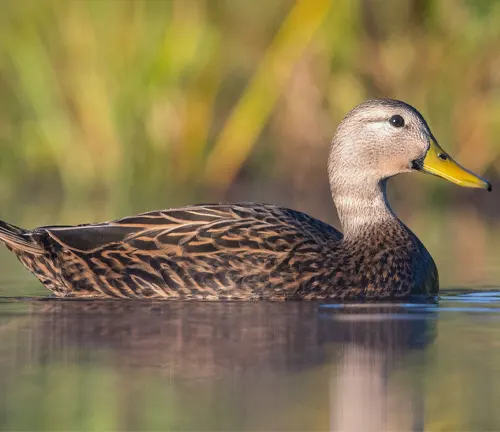
Mottled Duck
(Anas fulvigula)
Native to the Gulf Coast of the United States and Mexico, the Mottled Duck resembles the female Mallard but with a slightly different coloration pattern.
Mexican Duck
(Anas diazi)
Endemic to Mexico and parts of the southwestern United States, the Mexican Duck is closely related to the Mallard and is sometimes considered a subspecies.


Northern Pintail
(Anas acuta)
While not a direct subspecies of the Mallard, the Northern Pintail is closely related and shares similar habitat preferences. It is known for its long, slender neck and distinctive elongated tail feathers.
Gadwall
(Anas strepera)
Another species closely related to the Mallard, the Gadwall is known for its mottled brown plumage and distinctive white wing patches.
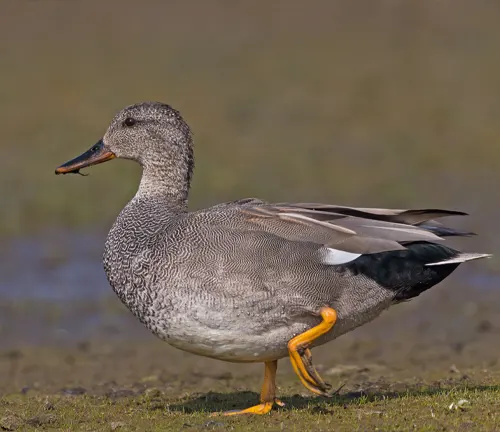
Frequently Asked Question (FAQs)
- What is the average size of a Mallard duck?
The average size of a Mallard duck ranges from 50 to 65 centimeters (20 to 26 inches) in length. - How fast can Mallard ducks fly?
Mallard ducks can fly at speeds of up to 55 miles per hour (89 kilometers per hour) during migration. - Do Mallard ducks mate with other duck species?
Yes, Mallard ducks can interbreed with other duck species, leading to hybrid offspring. - What is the social structure of Mallard duck flocks?
Mallard duck flocks typically consist of small groups of individuals, with males often displaying dominance hierarchies during the breeding season. - How do Mallard ducks protect themselves from predators?
Mallard ducks rely on camouflage, vigilance, and swift flight to evade predators. They may also seek refuge in dense vegetation or water to avoid detection. - At what age do Mallard ducks reach sexual maturity?
Mallard ducks usually reach sexual maturity at around one year of age. - What is the lifespan of Mallard ducks in the wild?
In the wild, Mallard ducks typically live for 5 to 10 years, although some individuals may live longer under favorable conditions. - What is the role of Mallard ducks in ecosystems?
Mallard ducks play a vital role in ecosystems as seed dispersers, predators of aquatic invertebrates, and prey for various predators, contributing to nutrient cycling and ecosystem balance. - Do Mallard ducks exhibit territorial behavior?
Yes, male Mallard ducks often exhibit territorial behavior, especially during the breeding season, to establish and defend mating territories. - Are Mallard ducks considered an invasive species in certain regions?
Mallard ducks are not considered invasive species globally, but they have been introduced to some regions outside their native range, where they may compete with native waterfowl for resources. - What are the main differences between wild Mallard ducks and domestic ducks?
Domestic ducks, bred from Mallard ducks, may exhibit differences in size, coloration, and behavior due to selective breeding by humans. - How do Mallard ducks adapt to changes in their environment?
Mallard ducks are highly adaptable birds capable of adjusting their behavior, habitat use, and feeding habits in response to environmental changes such as habitat loss, urbanization, and climate change. - What are the main threats to Mallard duck populations in urban areas?
The main threats to Mallard duck populations in urban areas include habitat loss, pollution, predation by domestic pets, and human disturbances. - Can Mallard ducks crossbreed with other waterfowl species?
Yes, Mallard ducks can hybridize with other duck species, leading to hybrid offspring with intermediate characteristics. - What is the significance of the Mallard duck’s coloration and plumage?
The vibrant coloration and plumage of Mallard ducks serve various purposes, including camouflage, mate attraction, and species recognition, enhancing their survival and reproductive success.


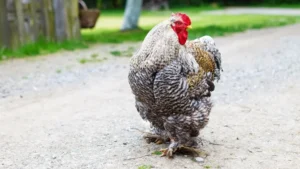

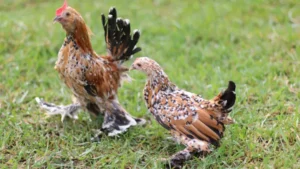


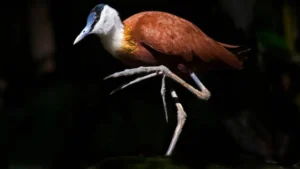

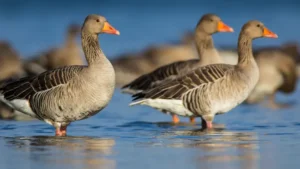
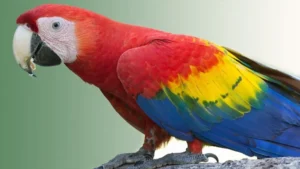
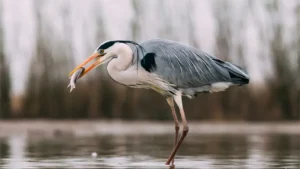

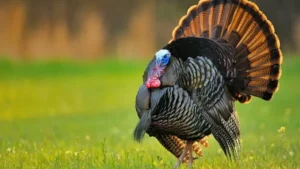
Leave your comment